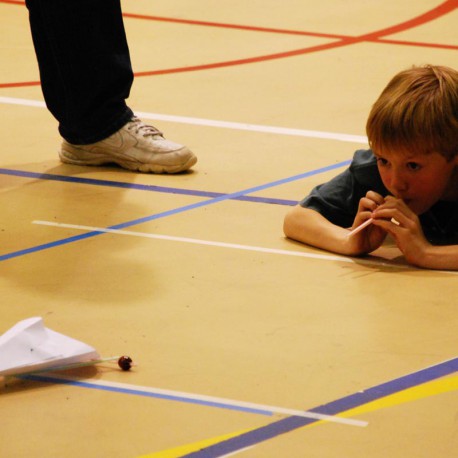 View larger
View larger
Puff Mobiles
New activity
Renewable energy sources are in focus as participants build a wind-powered car using straws, Lifesavers candies, paper, and paperclips, and get their car to the finish line using as few puffs of air as possible.
Open Activity
How-to Video
Family Take-home Activity
A take-home that can be sent with patrons that wish to do STEM activities at home. These at-home activities cover similar topic areas as the associated activity and could be handed out at the conclusion of a program or left on a circulation desk for patrons to take home.
-
Rating
-
Participants Enjoyed the ActivityParticipants Learned from This ActivityActivity Instructions Were Clear and Easy to FollowWould Recommend
Related Programming Resources
Reviews
Excellent for Teaching the Engineering Design Process
I used this activity as one of three for a library event called “The Power of Wind.” The program was targeted for kids in grades K-6 and their caregivers were invited to stay. The other two activities I did during this event were “Can a Toaster Make Wind?” and “Wind Streamer.”
For this activity, I purchased individually wrapped Lifesavers. The other supplies (paper, straws, paper clips, tape, scissors, rulers, and markers) we had on hand. I had designed my own puff mobile ahead of time, but purposefully did not show it to the kids until after they had designed their own. I did this in hopes they would come up with their own creative designs and their vehicles were very different from mine.
After I introduced the concept of wind and we performed the demonstration, “Can a Toaster Make Wind?” I went through the questions listed in the introduction of the activity and I was surprised how few kids realized that wind could be used to power vehicles. Once someone mentioned sailboats, they were on board for making a wind powered car. Kids were allowed to work as individuals or as teams, and all of them chose to design their own vehicles. I distributed the exact amount of items listed in the activity’s supply list, but found that the kids really needed more than 50cm of tape, so they all got a second strip of tape after we had started building.
While the kids designed and built their vehicles, I talked about the engineering design process and let them know that after they tested their puff mobile, they could absolutely go back and make changes to try and improve it. However, outside of the extra tape, they were not given any additional supplies. I also played a video of the Greenbird setting the wind powered land speed record while they were building (https://www.youtube.com/watch?v=TRFRQXPtXTs) for inspiration.
Once they completed their designs (after about 20 minutes), we raced them two at a time on a smooth table top. The winner of each heat stayed on the table and the slower vehicle was given the chance to re-design and re-challenge. We spent about 35 minutes total on this activity. Instead of waiting until we completed our redesigns, I used the “questions to ask after the activity” to try and help them think through their design changes.
Overall, this was a fun project that really demonstrated the engineering design process very well.
A great family project
I used this project as part of a Family Science program. In this program, families work at their own pace on several different experiments/projects.
For the Puff Mobiles, I gave each family a baggie with the supplies, and the instructions to create a vehicle that used wind power to move (i.e. air blown thru a straw). Families had a blast talking and planning about what type of vehicle to make, and how best to use the limit supplies given. The open-ended nature of the project allowed for lots of creativity and ingenuity. A few families asked for a second bag of supplies so they could try out (and even race) a second design!
Kids loved the open-ended aspect
While I made an example option before we started, I kept it in reserve, as I didn't want to influence the kids' ideas on how to get started. This turned out to be a good plan and I never pulled out my version, as participants came up with a wide variety of designs on their own. We did end up allowing extra straws and tape, and added pipe cleaners to the supply options, as it didn't seem like quite enough supplies to keep wheels attached and hold everything together all at the same time. If you want increased challenge, stick to the original list, as it is marginally possible, just trickier and the vehicle tends to be less robust.
Kids really enjoyed the activity. Most worked for at least 20-25 minutes on the actual building process, but a few kept tweaking their designs for close to an hour.



